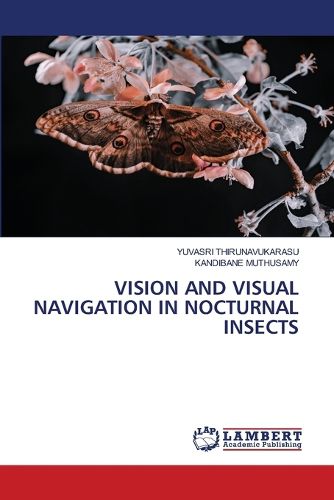Readings Newsletter
Become a Readings Member to make your shopping experience even easier.
Sign in or sign up for free!
You’re not far away from qualifying for FREE standard shipping within Australia
You’ve qualified for FREE standard shipping within Australia
The cart is loading…






This title is printed to order. This book may have been self-published. If so, we cannot guarantee the quality of the content. In the main most books will have gone through the editing process however some may not. We therefore suggest that you be aware of this before ordering this book. If in doubt check either the author or publisher’s details as we are unable to accept any returns unless they are faulty. Please contact us if you have any questions.
Insects possess highly sophisticated visual systems despite their small size and limited number of neurons. Their compound eyes enable them to perform a variety of tasks, such as locating food, evading predators, and navigating complex environments. Nocturnal insects face the added challenge of operating in low-light conditions, which can be up to 11 orders of magnitude dimmer than daylight. Despite these challenging conditions, nocturnal insects have been found to carry out the same visual tasks as their diurnal counterparts with equal precision. The primary requirement for vision is the ability to capture sufficient light. Diurnal insects, active during the day, meet this requirement easily. However, nocturnal insects have adapted remarkable strategies to see well in low light. Their eyes are highly sensitive, capturing as many photons as possible. Higher-level visual processing in insects involves recognizing landmarks, detecting obstacles, and identifying flowers. Behavioral studies across various insect species support these findings, highlighting their extraordinary visual capabilities. During their evolution, insects have overcome several serious potential visual limitation.
$9.00 standard shipping within Australia
FREE standard shipping within Australia for orders over $100.00
Express & International shipping calculated at checkout
This title is printed to order. This book may have been self-published. If so, we cannot guarantee the quality of the content. In the main most books will have gone through the editing process however some may not. We therefore suggest that you be aware of this before ordering this book. If in doubt check either the author or publisher’s details as we are unable to accept any returns unless they are faulty. Please contact us if you have any questions.
Insects possess highly sophisticated visual systems despite their small size and limited number of neurons. Their compound eyes enable them to perform a variety of tasks, such as locating food, evading predators, and navigating complex environments. Nocturnal insects face the added challenge of operating in low-light conditions, which can be up to 11 orders of magnitude dimmer than daylight. Despite these challenging conditions, nocturnal insects have been found to carry out the same visual tasks as their diurnal counterparts with equal precision. The primary requirement for vision is the ability to capture sufficient light. Diurnal insects, active during the day, meet this requirement easily. However, nocturnal insects have adapted remarkable strategies to see well in low light. Their eyes are highly sensitive, capturing as many photons as possible. Higher-level visual processing in insects involves recognizing landmarks, detecting obstacles, and identifying flowers. Behavioral studies across various insect species support these findings, highlighting their extraordinary visual capabilities. During their evolution, insects have overcome several serious potential visual limitation.